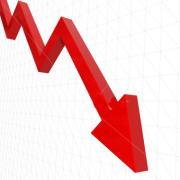
There was a recent piece on Eco Business about Singapore’s packaging recycling scheme being delayed and how the polluter-pays principle seems to have failed to take hold in this particular situation. It was partly because of a speech by an activist in the recent SG Climate Rally.
The principle of polluter-pays is important because it helps to internalise the social cost of pollution and allows the market to price it in correctly. The result would be that the production and eventual consumption of the relevant goods stays at the level which is socially optimum.
Product packaging is itself a massive problem where it is clear certain social costs of the waste production is not properly internalised. The fact that supply chains are such that buying a new product is cheaper than the refill version, and the fact that massive amounts of materials are used in packaging without producers having to foot the cost of disposal, seems to be an issue. But the situation is also because waste management is not properly priced. Today, in Singapore, the amount of cost you shoulder for waste disposal is based on where you live and the type of dwelling you live in rather than the amount of waste you generate. This in itself is already not exactly adhering to the polluter-pay principle.
Creating a plastic bottle or aluminum can refund scheme would also jack up the cost of the products but sometimes we forget who are actually the polluters. The ultimate polluters are still the consumers and in making our purchase decisions, if we recognise the cost to the environment and decide that accordingly, it changes the dynamics of the situation and allows the producers to ‘suffer’ the cost from the lack of demand despite the low-ish prices. But that still doesn’t produce a very reliable signal in the marketplace. And that’s why it makes sense to properly ‘tax’ the producers or the consumers somehow to get the market back in line.
As it turns out, the identification of the polluter does not matter much. What matters is that the associated product gets the pollution priced in somehow. You can charge even the shops that are stocking the products. The reason is that the cost will reverberate through the supply chain; the higher price will result in less customers buying it, sending a demand signal that reduces the orders and stocking by the shop, who will order less from their suppliers and so on. Eventually, at the default price point the producer will realise the market isn’t taking as much of the product that they are producing hence reducing their production and hopefully the pollution as well.
The tricky issue is pricing the pollution and getting a sense of how much the marginal reduction in production could reduce the pollution. This is tricky because the average pollution per product isn’t the same as the marginal pollution. And indeed you may have to curb consumption/production very drastically in order to reduce a bit of pollution if there is significant non-linearity involved. I won’t go into the mathematics here but suffice to say, there is reluctance to tinker too much with the pricing of more ‘ordinary’ consumer goods in Singapore. And it might be a shame for sustainability.


